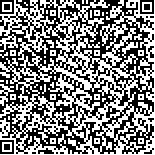| 摘要: |
| [摘要] 目的 分析青年人脑梗死的病因及其临床特点。方法 回顾性分析103例青年人脑梗死患者的临床资料。结果 有明确病因者94例,占91.26%,病因未明者9例,占8.74%,最常见的病因是动脉粥样硬化45例,占43.69%,其次是脑动脉炎18例,占17.48%。临床特点:发病年龄:30~39岁44例,占42.72%,40~45岁50例,占48.54%;男性多见共68例,占66.02%,以偏侧肢体无力为首发症状常见, 意识障碍少见;梗死部位:主要是基底节区37例,占35.92%, 其次是脑叶17例,占16.50%;预后较好, 病死率低。结论 青年人脑梗死的病因复杂,常见的病因是动脉粥样硬化,病变主要位于前循环,预后较好。 |
| 关键词: 青年人 脑梗死 病因 |
| DOI:10.3969/j.issn.1674-3806.2009.12.19 |
| 分类号:R 743.33 |
| 基金项目: |
|
| Analysis on pathogeny and clinical features of 103 young patients with cerebral infarction |
|
BAI Hua, ZHANG Qian
|
|
Department of Neurology, the First People′s Hospital of Nanning, Guangxi 530022, China
|
| Abstract: |
| [Abstract] Objective To analyse the causes, and clinical features of young patients with cerebral infarction.Methods Retrospective study of clinical data of 103 youth patients with cerebral infarction was carried out.Results Ninety-four patients had definite pathogeny(91.26%), Nine patients had unclear pathogeny(8.74%). The most common cause was atherosclerosis (45 cases), accounted for 43.69%, followed by 18 cases of cerebral arteritis accounted for 17.48%.The clinical features were:44 cases occured between the ages of 30 and 39 years, accounted for 42.72%;50 cases occured between the ages of 40 and 45 years, accounted for 48.54%; 68 cases were male accounted for 66.02%, the unilateral limb asthenia was the common as first symptom; consciousness was rare. Infarction sites: mainly located in basal ganglia (37 cases), accounted for 35.92%, followed by 17 cases of cerebral lobes accounted for 16.50%;the prognosis was better, with low fatality rate.Conclusion The causes are complicated in youth patients with cerebral infarction, the mostly common pathogeny is atherosclerosis, lesions are mainly located in anterior circulation, the prognosis is well. |
| Key words: Young adults Cerebral infarction Pathogeny |

